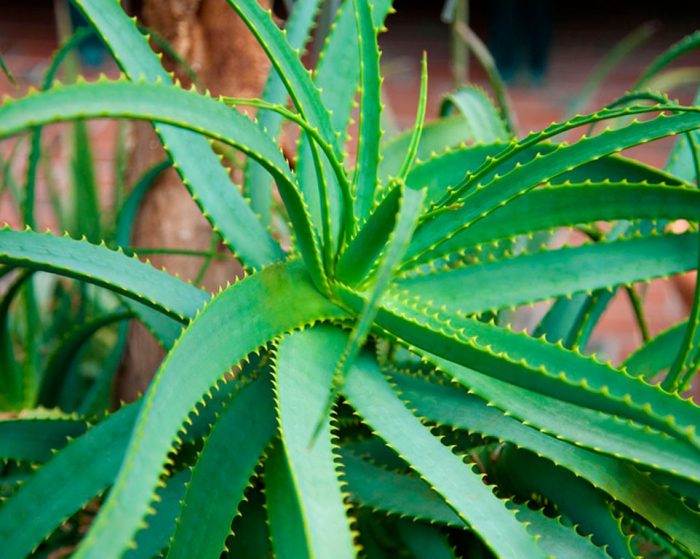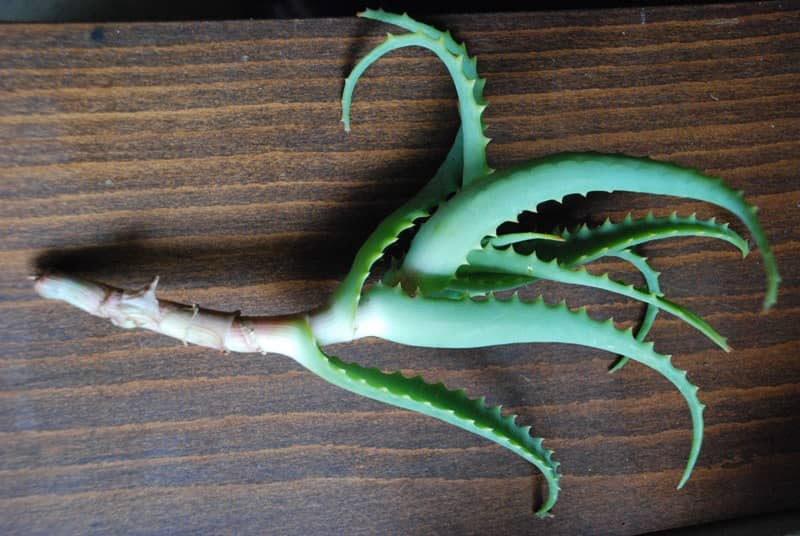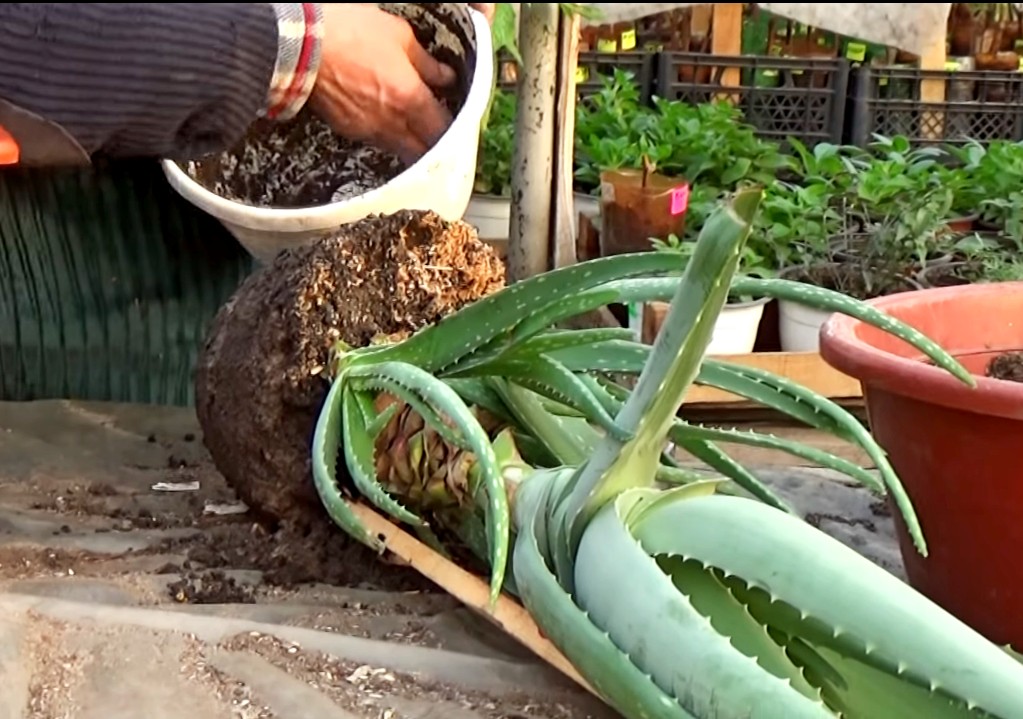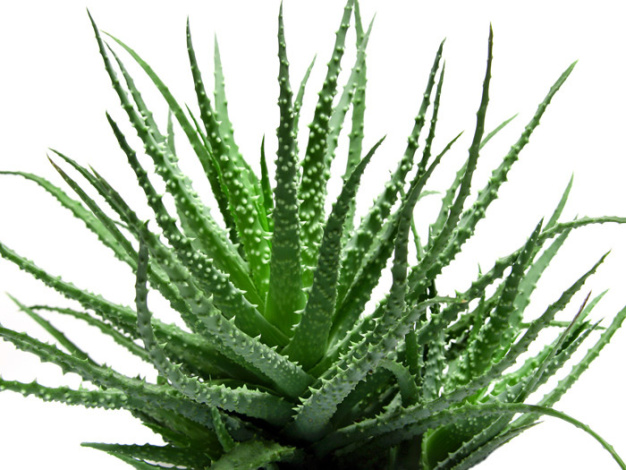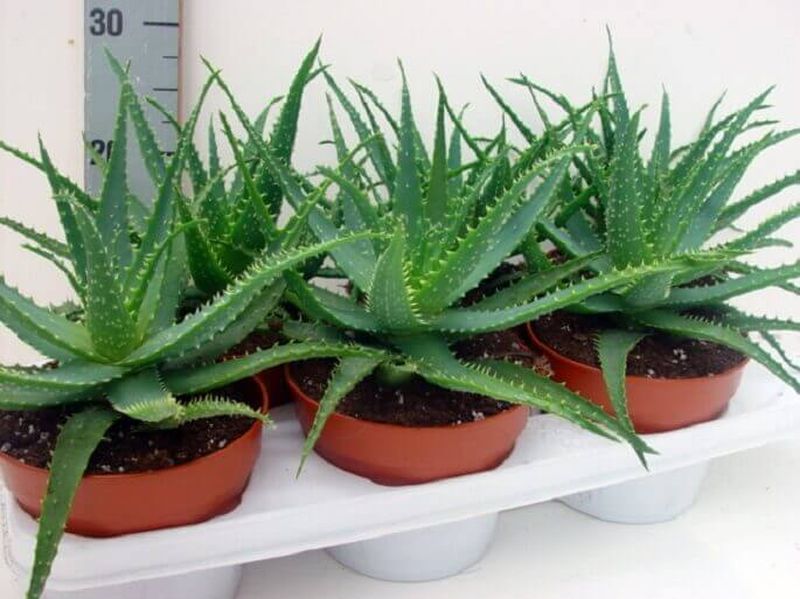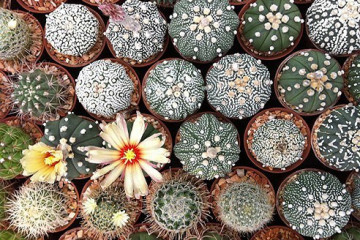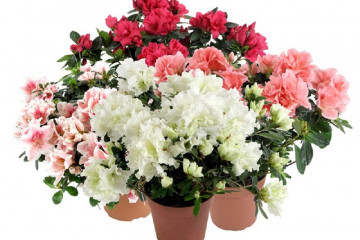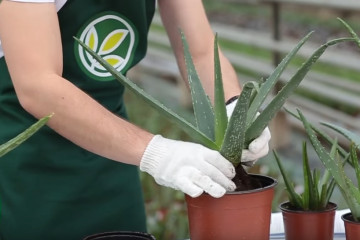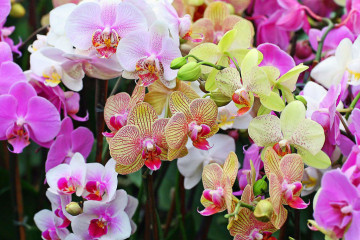How to transplant aloe: options in another pot and examples at home
Content:
Aloe (agave) is a houseplant that is undemanding to special care. It has medicinal properties that allow it to be used for a large number of diseases. One of the requirements for good plant growth and development is a neat transplant. Knowing how to transplant aloe is needed for every grower.
The main reasons for the transplant
Aloe is a plant that doesn't like a small pot. He gradually develops a wide root system, and a cramped pot will be deadly for her. Therefore, aloe must be transplanted into another pot correctly and on time.
Aloe transplant is carried out for the following reasons:
- The aloe must renew itself and acquire a beautiful appearance. Decorative properties largely depend on how wide the pot it grows. In small pots, the flower will wither, its roots will rot if improperly watered.
- At times, a large number of lateral processes grow around the central bush. It is recommended to transplant it so that the processes do not take away the juices from it. The transplant rejuvenates the plant and makes it more resistant.
- The most common reason for replanting is when the pot does not fit the plant. The flower should be transplanted immediately if roots begin to creep through the drainage system.
- As the aloe grows, the soil is depleted. If there are few nutrients and trace elements in it, growth gradually slows down, the lower leaves die off. The plant gradually loses its decorative properties. Aloe will be beautiful if the soil is enriched with nutrients and valuable trace elements.
- With improper watering, the roots gradually begin to rot. In this case, the flower needs to be transplanted urgently.
Optimal transplant frequency
The succulent grows rapidly. Young specimens need to be replanted annually (up to the age of 5 years). Growth slows down in adulthood. Therefore, it is recommended to replant the agave once every three years. More frequent transplants are harmful because they injure the indoor flower.
In winter or autumn, the indoor flower does not need to be disturbed. It is best to plant in early spring in March (before the start of the active growing season) or during the growing season (summer). At the beginning of spring or summer, the bush will quickly restore growth, settle in new soil.
Transplant methods
Readers are interested in how to plant aloe. There are many ways to breed aloe. They depend on which plant is being transplanted, how old it is, and whether there are shoots.
Seeds
Transplanting aloe with seeds is quite laborious. How to grow aloe from seeds depends on its viability. It is better to germinate the centenary in late February. The temperature during the transplant process should not be lower than 21 degrees.
Sowing of seeds is carried out in a specially prepared soil mixture of sod, leafy soil, sand. The sprouts dive into shallow boxes (the soil composition in them must be identical).
After the seedlings grow up, they are transplanted into pots. A year later they are seated again, tk. the root system grows enough, and it becomes cramped. In this case, the roots are damaged.
Jigging the appendix
Florists are interested in how to plant aloe with shoots. Transplanting cuttings is best in the summer. The healthiest shoots growing along the stem should be selected.
Properly processed cuttings are planted in wet sand. Watering is increased when the first small roots appear. After a week, the cuttings are planted in flower pots.
There are many ways to plant rootless aloe plants. You can cut or pinch off a leaf of the agave at the base. Just like the cutting, it is dried so that the cut point dries up. Since it is necessary to grow aloe from the leaves in moist soil, they are planted in the soil to a depth of about 3 cm in wet sand.
Aloe has babies. They are at the very base of the root and have their own roots. This feature greatly facilitates the transplantation process. The baby is dug up, while monitoring the safety of the root system. Then it is carefully transplanted into moistened sand.
Adult plant
It will be useful to know how to plant an aloe plant at home. A newly purchased flower needs to be kept in a pot for 3 weeks before replanting. During this period, the agave adapts to new growing conditions. It is better to set the pot separately from other flowers.
The first transplant is done only when the roots fill the entire pot. The diameter of the new container is 2 or 3 cm larger than the old one.
You need to know how to transplant aloe into other pots in the least traumatic way. It is completely removed from the old pot. This should be done as carefully as possible so that the earthy lump does not collapse. Then this ball is placed in a new pot exactly in the central part.
The resulting gap between the walls of the pot and the lump is filled with fresh soil. You need to seal it with a stick or pencil. You also need to add earth on top.
After transplanting, the plant is not watered for two days. During this time, minor root injuries will pass. Then the agave is watered moderately.
Transplant into open soil
This procedure can be done only in summer conditions and only in a warm region. For the plant to feel normal, the air temperature should be about 23 degrees. The sequence (algorithm) of actions when transplanting an agave into open soil is as follows:
- You need to choose a good place to transfer. It should be lit, but not in direct sunlight.
- The plant should not get wet in the rain. You should take care of a reliable shelter.
- The hole should be slightly larger than the pot in which the plant was previously located.
- A small amount of sawdust or fine coal should be poured at the bottom. Expanded clay, ready-mix is sprinkled on top.
- Aloe is placed in the hole and covered with the mixture.
- If the plant grows in the open field, then it does not need to be fed.
Preparing for transplant
The bush must be carefully replanted, following all the necessary recommendations. If everything is done correctly, then the plant will not be injured, it will survive the change in soil well and will resume growth very quickly.
Pot selection
The choice of a pot must be approached very responsibly. Its size depends entirely on why the plant is transplanted.If it is young, has a powerful and well-developed root system, then the capacity must be selected large. If the aloe has young shoots, then the plant can be left in the same box (provided that the shoots have been removed). The pot can be taken slightly smaller if the transplant is done due to rejuvenation (in this case, the affected or dead parts are removed).
All pots should have drainage holes at the bottom. If present, the soil will not sour. The old pot must be rinsed before further use.
Soil quality
The new soil should be as close as possible to the previous one. Ideal if you buy it in one store. On the packaging of the soil for aloe, it should be indicated that the substrate is specially prepared for succulents or for cacti. The earth must be loose. When self-preparing soil for aloe, sand is added to the leaf and sod soil.
Home transplant
Florists need to know how to transplant aloe bushes at home. The transplant should not be too frequent. But it cannot be postponed for more than three years. The length of its life depends on how to plant the aloe plant. If it is contained in stagnant and especially sour soil, it will start to hurt.
During the transplant, one hand holds the houseplant at its base. Another - you need to keep the flowerpot itself. Dry, old and rotten roots are removed immediately.
When transplanting scarlet, you do not need to take an overly large pot. It should be in the most suitable conditions for it. Aloe can bloom very rarely.
Further care of the flower
The plant moves for a week or two in partial shade. In the shaded position, the flower heals injuries, gets used to new conditions. Injuries during transplanting are always inevitable, even if the plant is transplanted very carefully.
Location and lighting
The plant needs a significant amount of sunlight. In the springtime, it is necessary for the aloe to get used to the intense sunlight. At lunchtime, it is enough to hang a small screen on the window. This technique avoids burns.
It is good if the aloe grows on the balcony or terrace in the summer. In these conditions, it must be hidden from the rain. Excess moisture contributes to the fact that the flower will rot.
In the fall, with a decrease in daylight hours, aloe needs additional lighting. A fluorescent lamp is suitable for this. It must be turned on as soon as the sun is hidden behind the horizon.
Temperature
The optimum temperature should not be higher than 30 degrees. In winter, you need to ensure that it does not fall less than 12 degrees. Aloe does not withstand frost, therefore, a sharp drop in temperature in winter rooms should not be allowed.
Humidity
The plant tolerates dry indoor air well. Nevertheless, if dryness is combined with an elevated temperature, it should be watered more often and sprayed periodically. In winter, when the central heating is on, use a humidifier or place small containers of water near the pot.
The plant should not be allowed to develop in rooms with dampness. The root system and stems will suffer from this.
Watering
Watering is highly dependent on the ambient temperature. If in summer the temperature reaches 30 degrees, then the plant needs to be watered every other day, sometimes daily. In the cold season, the temperature can drop to 12 degrees, in which case the aloe is watered once a week.
When growing, the soil is watered under the root, and not from above. Water that gets on the leaf rosette causes stem rot. The main criterion for the need for watering is the complete drying out of the soil.
An adult plant is fed no more than once every 3 weeks. The best will be a special fertilizer for the cactus.
The soil
It is necessary to monitor the condition of the soil.If it turns sour, the bush urgently needs to be transplanted. You need to purchase the substrate in flower shops - there are kits specially designed for succulent plants.
If the plant does not take root
There are several reasons why the plant does not take root:
- Unsuitable soil composition. It is urgent to replace it or prepare a mixture with the correct ratio of components. The best option is to buy a ready-made mixture for succulent species.
- Poor quality planting material when transplanted by cuttings. This happens if the cutting is taken from a large plant. In this case, the agave needs to be replanted again.
- Improper care. It is necessary to carefully follow the recommendations of flower growers and eliminate even the smallest signs of the disease in time.
Diseases, pests
The century plant can be affected by dry or gray rot. Diseases are manifested by drying or deformation of the leaves, rotting of the roots. If these signs are found, the agave needs to be urgently transplanted.
Aloe can be affected by such pests:
- Spider mite. It is difficult to notice it due to its small size. The main sign is that the thinnest cobweb appears on the leaves. The leaves turn pale and dry. At a later stage of the development of the disease, they become scarlet.
- The scale insect inhibits the process of photosynthesis. Red spots appear on the leaves.
- A sign of a mealybug is the coating of leaves with bloom.
You can fight pests with the help of special antiparasitic drugs.
Aloe is an unpretentious, beautiful and useful plant. If you follow the care, you will never have a problem with it. Its longevity will depend on the correct transplant.
